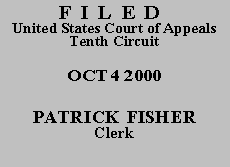

| UNITED STATES OF AMERICA,
Plaintiff-Appellee, v. DALE LEROY HODGES, Defendant-Appellant. |
|
In this direct appeal, defendant Dale Leroy Hodges challenges the propriety of his sentence following conviction for maintaining a place for manufacturing a controlled substance, in violation of 21 U.S.C. § 856(a)(1), and for money laundering, in violation of 18 U.S.C. § 1956(a)(1)(B)(i). Specifically he argues that the district court erred in enhancing his sentence two levels for possession of a firearm pursuant to USSG § 2D1.1(b)(1), and by failing to grant him a downward departure under the "safety-valve" provisions of USSG § 5C1.2. We affirm.
Mr. Hodges was arrested while he was tending marijuana fields located on his property. The property had been under surveillance by law enforcement authorities for several months. Contemporaneous with his arrest, federal and state authorities executed a search warrant at this location, which also included a residence. A well-worn path led from the residence to the marijuana field. Mr. Hodges had also been observed entering and leaving the residence.
Inside the residence, agents found equipment used for the production and processing of marijuana. The agents also found the three firearms which form the basis of the enhancement. The residence previously had been occupied by an individual other than Mr. Hodges. This person had moved out approximately one week before the search warrants were executed and was the only one who had been seen by the authorities handling the firearms.
Mr. Hodges pled guilty pursuant to a plea agreement. At the sentencing hearing, the district court granted the government's motion for a downward departure based on substantial assistance, enhanced the sentence for possession of a firearm pursuant to § 2D1.1(b)(1), and determined that Mr. Hodges's request for a downward departure based on the safety-valve provisions found in § 5C1.2 was moot. Mr. Hodges appeals these last two determinations.
We review de novo the district court's interpretation of the sentencing guidelines while we use the clearly erroneous standard to review the trial judge's factual determinations at sentencing. See United States v. Roberts, 980 F.2d 645, 647 (10th Cir. 1992). We give due deference to the application of the guidelines to the facts. See United States v. Vaziri, 164 F.3d 556, 568 (10th Cir. 1999).
Section 2D1.1(b)(1) provides for a two-level increase in the base offense level for certain drug-related crimes "[i]f a dangerous weapon (including a firearm) was possessed . . . ." The government has the initial burden of proving possession by a preponderance of the evidence. See Vaziri, 164 F.3d at 568. Constructive possession is sufficient to support the enhancement. See United States v. Payne, 81 F.3d 759, 762 (8th Cir. 1996) ("It is not necessary that an individual be observed using the weapon, and either actual or constructive possession is sufficient, i.e., the individual must have exercised ownership, dominion, or control either over the firearm or the premises on which it is found." (internal quote omitted)). Once the government meets this initial burden, the burden shifts to the defendant to prove that it is "clearly improbable" that the weapons were connected to the offense. See Vaziri, 164 F.3d at 568.
It is undisputed that Mr. Hodges owned the property where the firearms were discovered. Moreover, the firearms were found in close proximity to the rooms used to grow and process the marijuana. Accordingly, we find no error in the district court's imposition of the enhancement.
Mr. Hodges also contends that the district court erred in concluding that, because it had determined that he was subject to the enhancement under § 2D1.1(b)(1), the issue of whether he may receive the benefit of the safety-valve provisions found in § 5C1.2 was moot. This argument is foreclosed by United States v. Hallum, 103 F.3d 87, 89 (10th Cir. 1996), a case this panel cannot overrule. See United States v. Foster, 104 F.3d 1228, 1229 (10th Cir. 1997).
The judgment of the United States District Court for the Western District of Oklahoma is AFFIRMED.
Entered for the Court
Circuit Judge
*. This order and judgment is not binding precedent, except under the doctrines of law of the case, res judicata, and collateral estoppel. The court generally disfavors the citation of orders and judgments; nevertheless, an order and judgment may be cited under the terms and conditions of 10th Cir. R. 36.3.